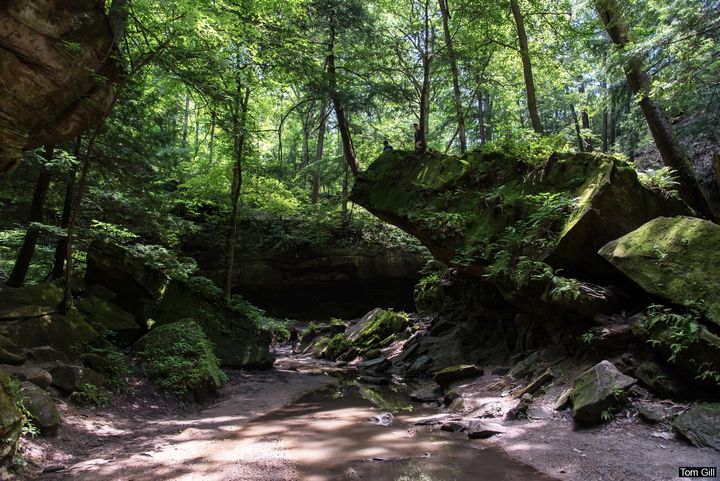
Trail 3 passes under Wedge Rock.
The Indiana State Park with the unusual name is indeed a throw-back in time. Like any walk through a canyon, the rocks represent the earth’s past - millions of years of history. But Turkey Run State Park seems different, and in actuality, it is. Made up primarily of Mansfield Sandstone, the rocks of the canyon walls date back some 300 to 600 million years, while the canyons we see today were carved sometime around 12,000 years ago by the powerful glacial meltwaters from the north. In fact, boulders originally from Canada are scattered around the park, erratics carried hundreds of miles by the glaciers.
Located in west-central Indiana’s Parke County, Turkey Run offers plenty of activities for almost everyone. From hiking to canoeing, picnics to swimming, the park and Inn (located on the premises) have activities for everyone.
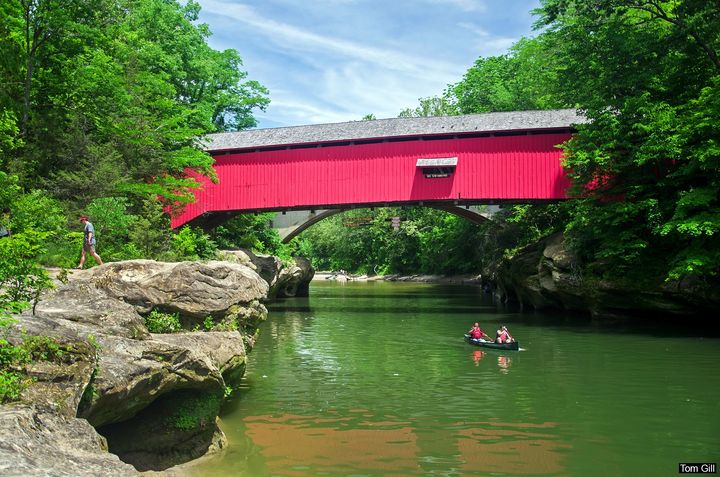
The Narrows covered bridge.
Paddling down Sugar Creek is one of the more popular activities in and around the park. Several nearby canoe and kayak outfitters offer rentals ranging from a few hours to two days. Paddlers are driven upstream where they launch their boats and paddle downstream to explore the park, and ultimately to a launch near their car. On beautiful summer days, hundreds of paddlers can be seen enjoying Sugar Creek along side groups of people tubing down the creek.
Two historic covered bridges are near the boundaries of the park - the Narrows and the Cox Ford. In fact, Parke County, Indiana is home to 31 historic covered bridges, many more than Madison County of movie fame. You can read more about the covered bridges in two of my previous posts: Part 1 and Part 2.
There are miles of hiking trails in the park, but my favorites, and the ones with the most diversity are trails 2 and 3. Stepping onto trail 3, one immediately notices a temperature difference. On all my visits to Turkey Run, the air was much cooler on this trail than the surroundings. Also noticeable is the change in plant life. Moss, ferns, and conifer trees replace the deciduous trees found in most other areas of the park.
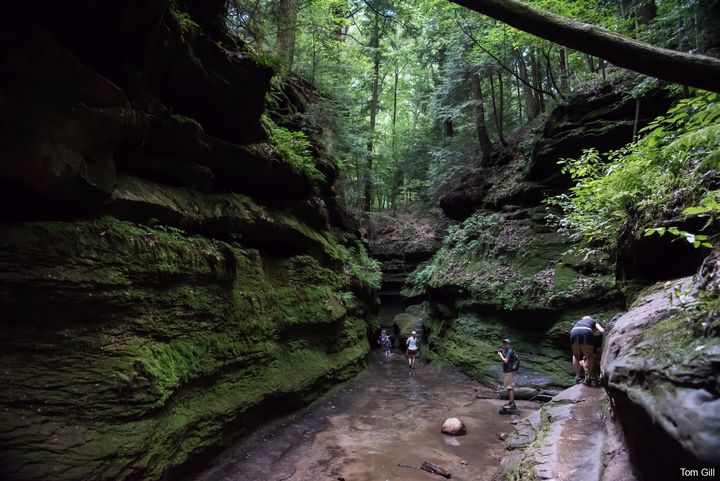
Hiking trail 3
These trails are rugged, not the crushed limestone or pine bark trails of most state parks - you’re going to get muddy and probably wet. While most areas are clear of debris, there are plenty of places where hikers must climb over boulders and logs, and at times, the trail is actually the stream bed itself.
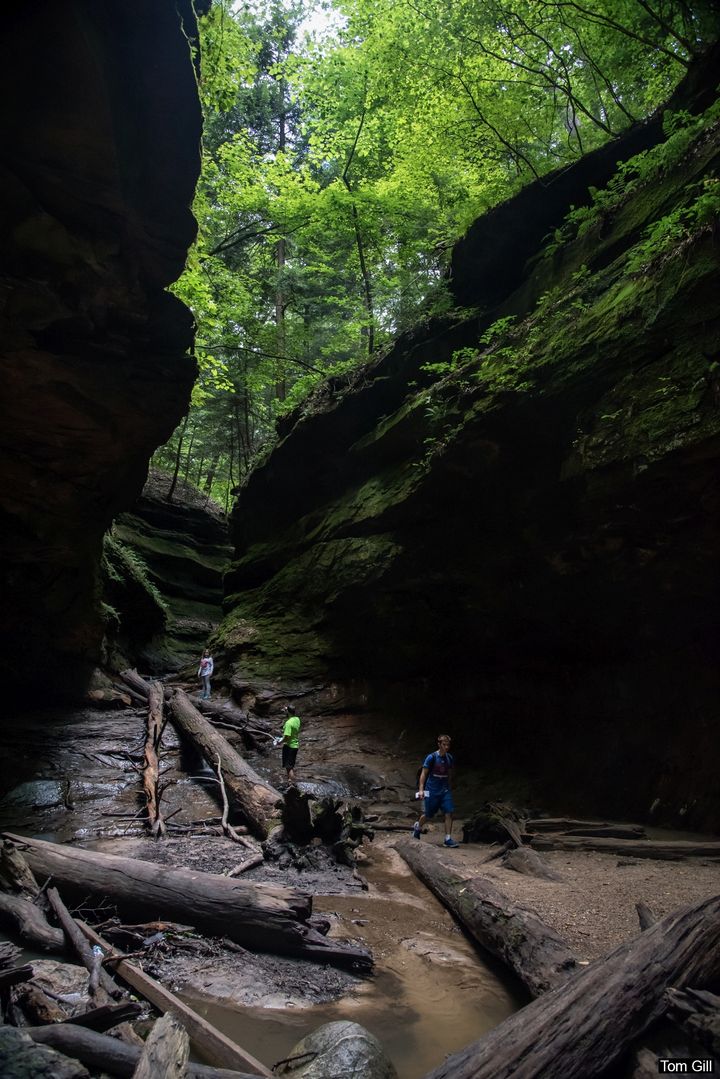
Up the waterfall
The photo above shows a portion of trail 3 that requires hikers to walk up a waterfall. Most of the time the water is flowing at a slow rate, but at times, there is no way up without walking through the ankle-deep water. To me, this is what hiking is all about, not a paved path or boardwalk. The change in elevation, and the climbing over and onto boulders gives legs and feet a great workout.
It’s difficult to realize how large these canyons are, until you approach Wedge Rock. This piece of rock split away from the canyon wall and fell to it’s present location, creating a fantastic formation along the trail.
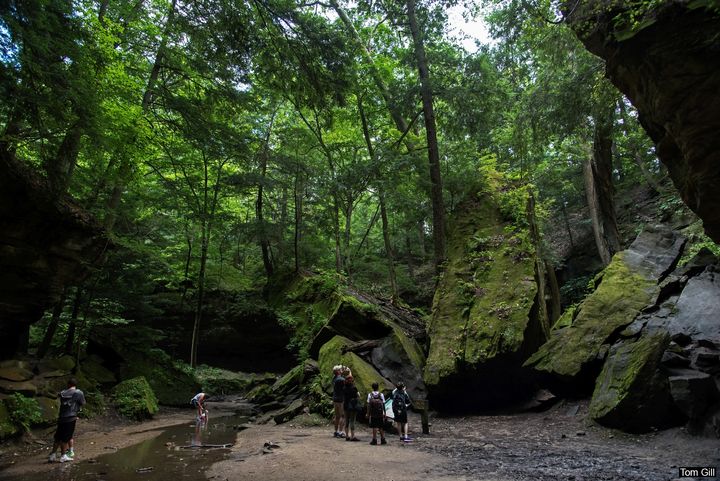
Approaching Wedge Rock on Trail 3.
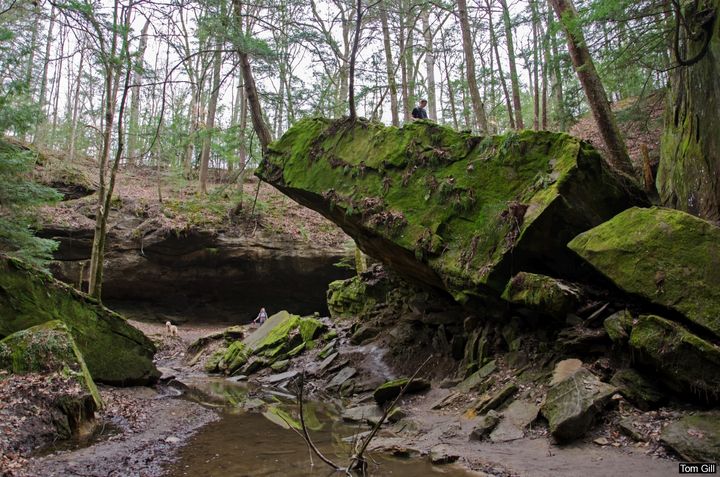
Wedge Rock
This huge chunk of rock seems rather small until you walk around the back side. The way the rock landed, allows visitors to walk up the angled rock and sit at the apex of the formation. Trees have actually taken hold on the top of the rock, with very little soil. Their exposed roots act as steps for those brave enough to climb up the rock.
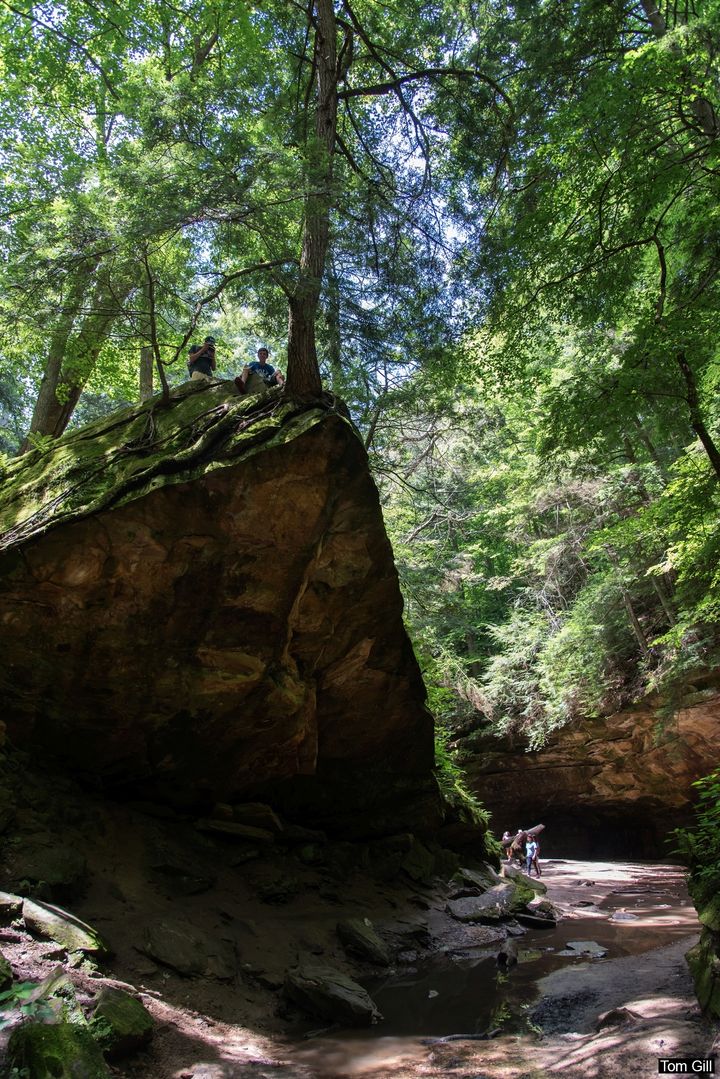
Wedge Rock from below.
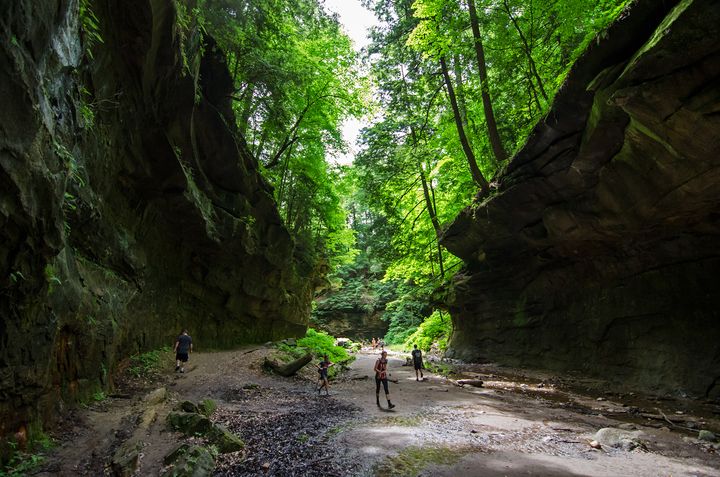
The green canopy above the damp canyon.
In summer, the dark canyon is a beautiful contrast to the bright, green canopy of the trees above. Huge Tulip Poplar trees tower above, dwarfing everything around, and when hiking at the bottom of the canyon, the sun filters through the giant trees, casting a green light on the canyon below.
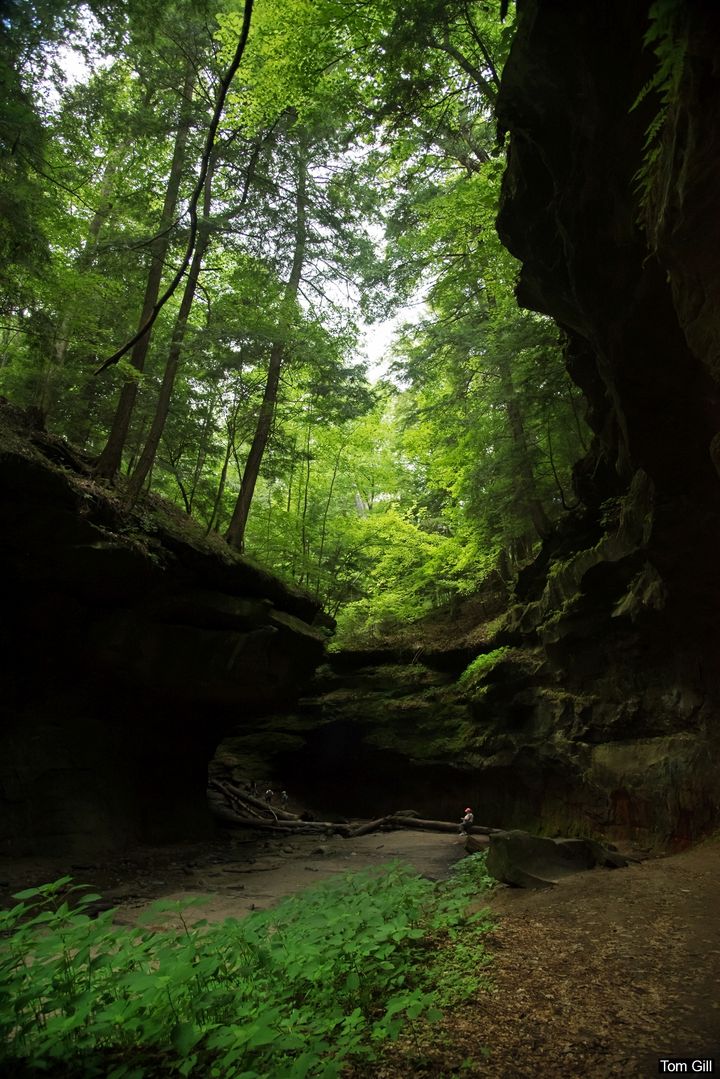
The canopy above filters the sunlight, and casts a green tint on the floor of the canyon.
Once through the large, open areas of the canyon, hikers must climb up a small waterfall. As they arrive at the top, the canyon narrows, and the stream bed becomes the trail. Adventurous hikers can use the “high road” a set of steps and hand-holds carved into the stone. This narrow path can be slippery, but is alot safer than it appears.
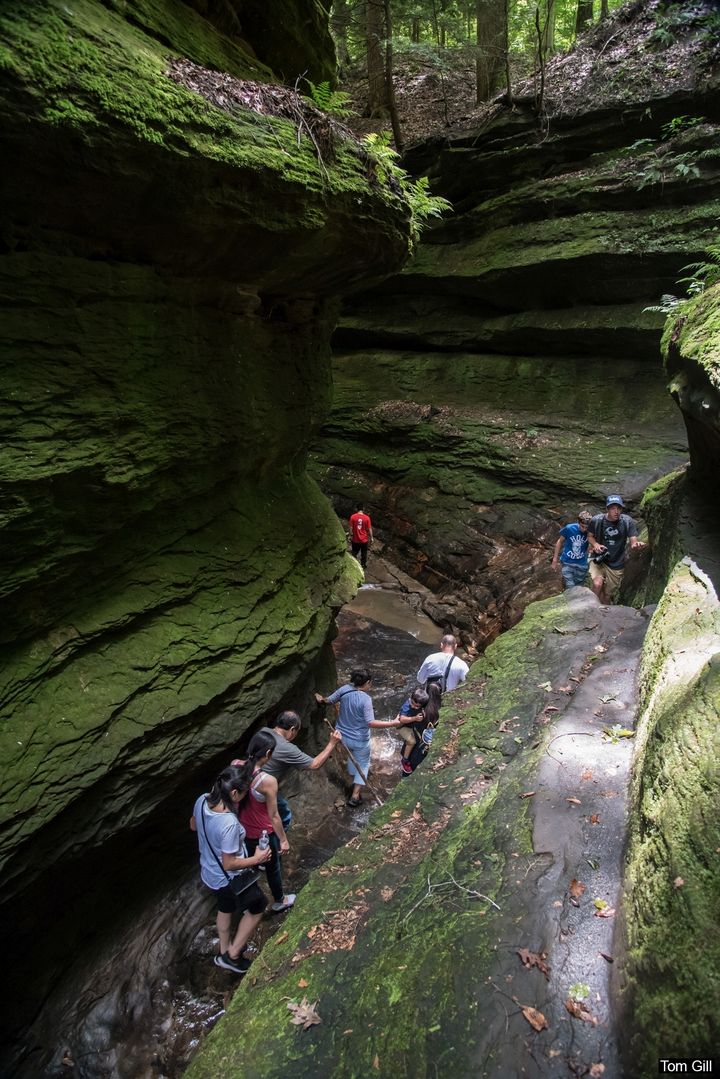
The trail narrows and the creek bed becomes the path, but a ledge and steps cut into the canyon wall allow hikers to keep their feet dry.
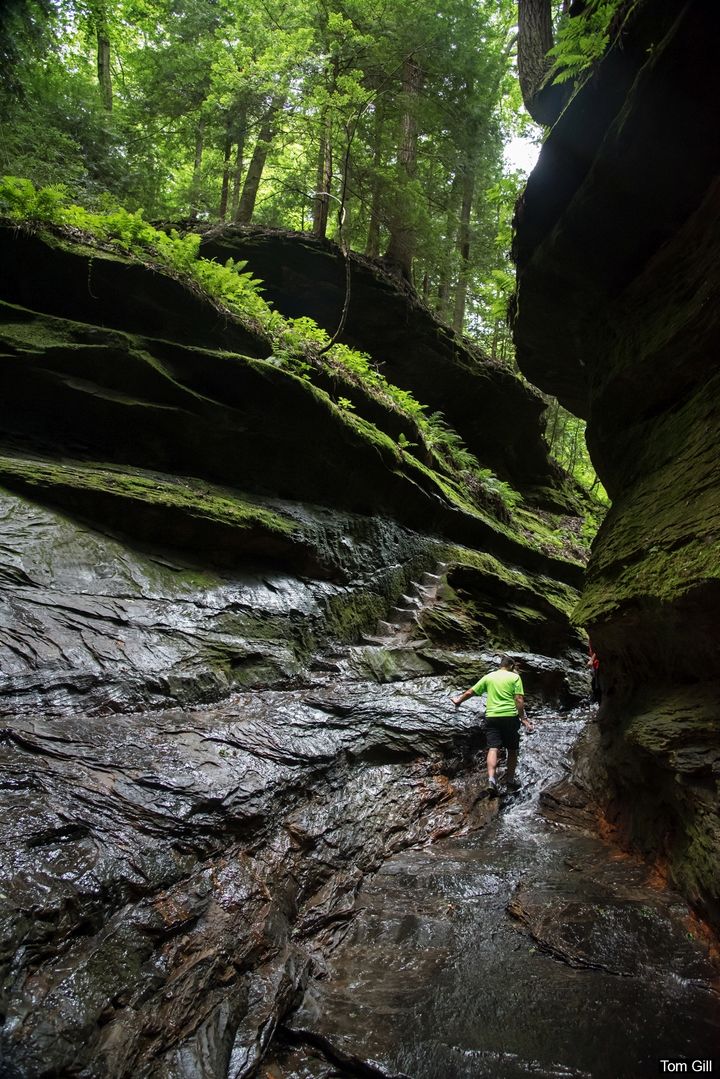
Narrowing of the canyon. Steps carved into the canyon wall allow hikers to keep their feet dry if they choose to climb them.
The winding canyon leads to the Punch Bowl, a small waterfall and blind canyon set away from the main trail. It’s a fun little diversion, and one of the more popular areas of the park.

Trail to the Punch Bowl
Following a visit to the Punch Bowl, visitors willing to continue on trail 3 must take on “The Ladders.” This is an area of the canyon with no natural way to traverse the different levels, so wooden ladders are used. On crowded days, there can be a short wait at this point, where hikers travelling the trail in both directions must utilize the ladders. it’s also a good time to stop and look around to make sure you don’t fall off the edge while waiting - I’ve seen more than one hiker slip off, but luckily they landed just a few feet down into a two foot deep pool of water. Wet, but not injured.
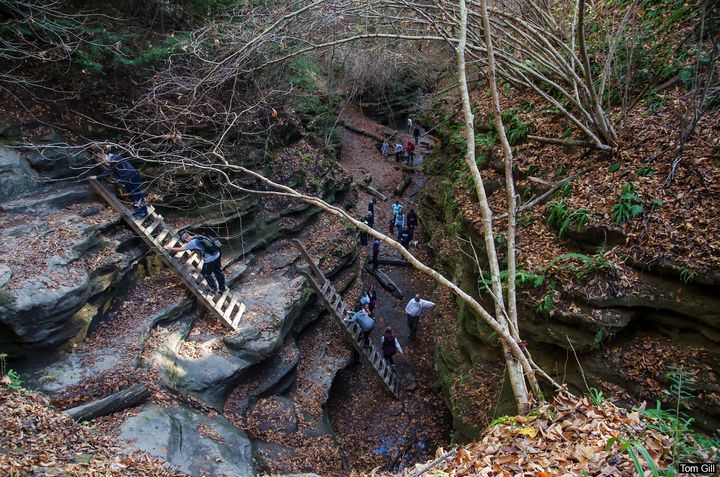
The ladders seen from above.
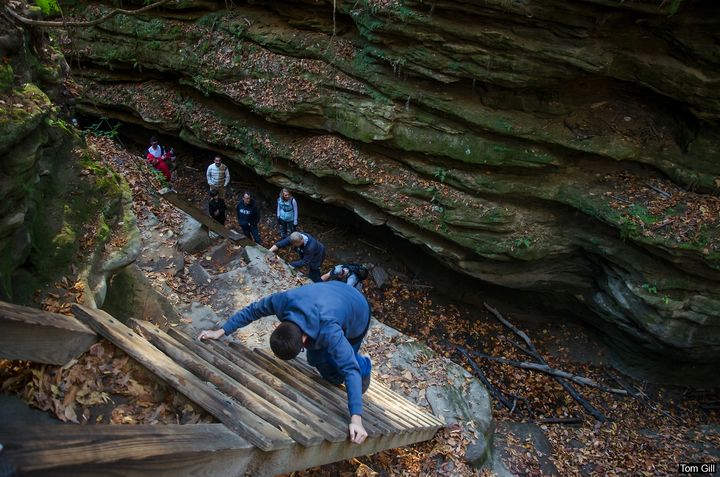
Traffic jam at the Ladders.
Hiking Turkey Run State Park is rather rugged, and really connects you with your natural surroundings. A 2.5 hour drive from Chicago, or a 40 minute drive west from Indianapolis, makes this park the perfect destination for a day trip.
We’ll see more from Turkey Run in the next post.
